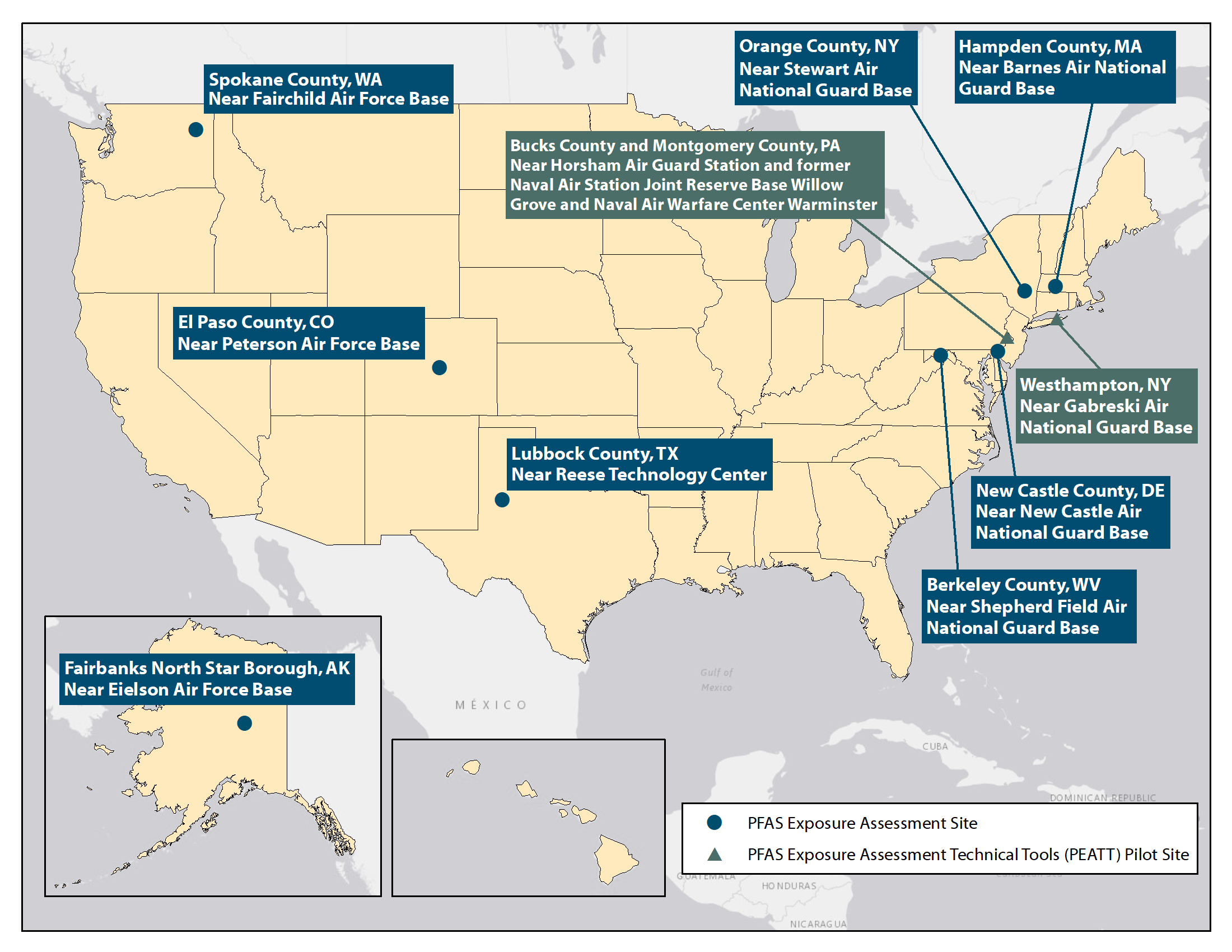PFAS Exposure Assessment Sites
How the Communities Were Selected
CDC/ATSDR used a rigorous process to choose sites for the exposure assessments (EAs), starting by identifying all communities near current or former military bases that were known to have PFAS in their drinking water. CDC/ATSDR, then, examined other factors, such as:
- Estimated number of people exposed
- Magnitude of exposure
- Estimated length of time exposure took place
In addition, the process also took into account the complexity of the drinking water system. This ensured that all potentially affected members of a community could be identified for possible inclusion. This gave CDC/ATSDR a good chance of learning information that is valuable to the selected communities and to other communities facing similar PFAS exposure. These selected sites are referred to as ATSDR-led EAs.
CDC/ATSDR funded two pilot exposure assessments that were conducted by the Pennsylvania Department of Health and New York State Department of Health using the CDC/ATSDR PFAS Exposure Assessment Technical Tools. They are referred to as pilot EAs.
The benefits of the exposure assessments extend beyond the communities identified. The lessons learned can also be applied to communities facing similar PFAS drinking water exposures.
The ATSDR-led exposure assessments took place in the following communities:








